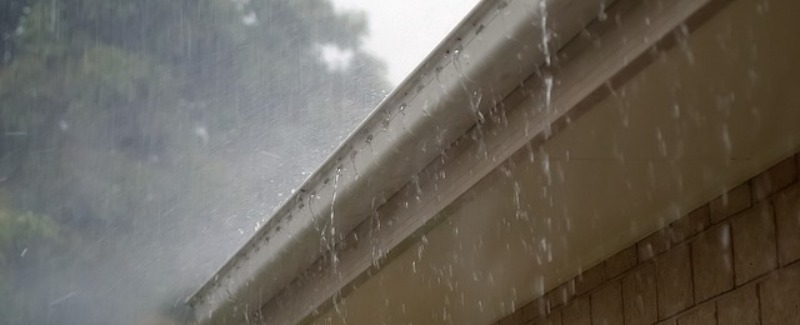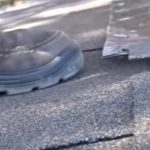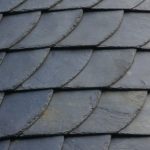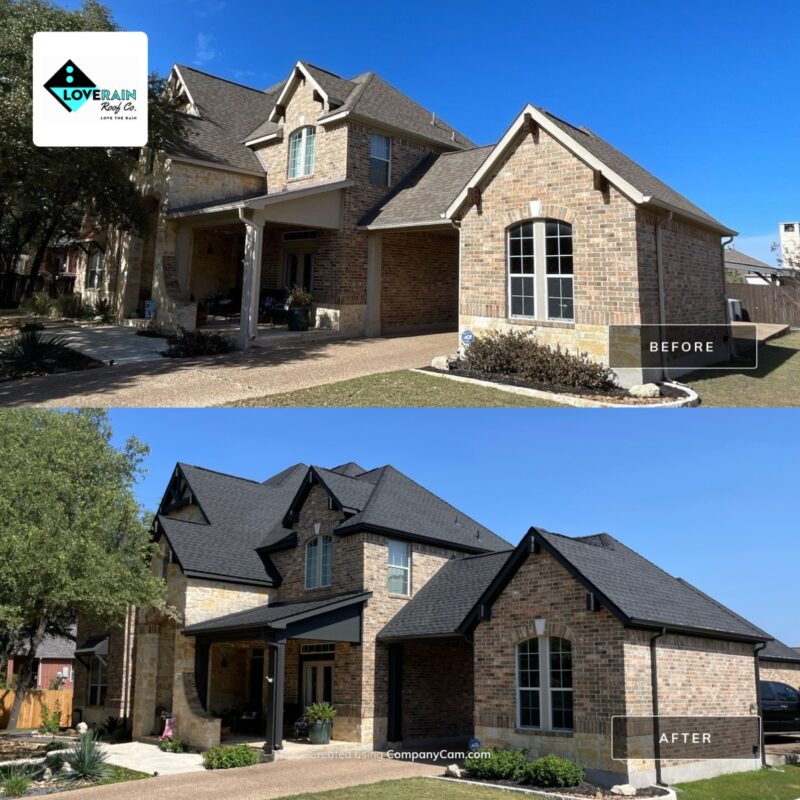Gutter Systems
Contents
When people think about their roofing system, they often consider just the roof itself. However, to keep a roof working properly, there are other factors that have to be considered, such as the gutter system. Austin roofing experts can help homeowners keep their gutters clean, which maximizes the lifespan of not only the gutter system but also the roof.
First, it’s important for homeowners to understand how a gutter system affects the roof and the foundation of the home. The main job of the roof is to protect the home by shielding it from the outside elements and facilitate the downward flow of water. As the water moves down the roof, it collects in the gutters, which lead the water to a downspout that safely carries the water down to the ground and away from the foundation of the house. Without gutters, the water falls directly off of the roof and pools close to the foundation of the home.
When the gutter system is working properly, water quickly runs off of the roof. If the gutters become clogged, however, it causes a buildup of water, which prevents the down flow of water and can cause the water to pool on the roof. As the water pools, it eventually starts to move back up the roof.
Roof coverings are supposed to protect homes from water flowing downwards, not upwards. This allows water to work its way under the roof covering and down into the roofing deck.
While it’s important for homeowners to have their gutters cleaned twice a year, they should also get them professionally inspected. During these inspections, roofers will check for problems such as leaks, holes, clogs or cracks. Typically, a gutter system is expected to last between 10 and 15 years depending on how well it’s maintained. They will also check for water damage around the fascia board, which is a reliable indicator that the gutter system is starting to fail.
If it’s time to replace the gutters, homeowners have a lot of options. Gutters are made out of different metals such as zinc, steel, aluminum and copper. Some gutters are made out of vinyl and are cheaper but typically don’t last as long as metal gutters. While copper gutters are the longest lasting gutters, they are also the most expensive. They add a lot of style to the home as well. Homeowners should talk to their local contractors to see which gutter option best fits their needs.
How often should I replace my gutters?
This will depend on the type of material you choose, the number of trees surrounding your home, and whether or not your roof receives direct sunlight. PVC and aluminum gutters are less durable than steel or copper, but are also less expensive. PVC may also crack or break when exposed to direct sunlight. If your gutters regularly become clogged with leaves, you will need to replace them more often, regardless of the type you choose.
Do metal gutters have to be coated with anything to prevent rusting?
It depends on the type of metal that’s used for the gutter system. For example, copper naturally resists rust and corrosion. However, steel cutters have to be coated with a layer of zinc, which is a process known as galvanization. In some cases, gutters are made completely out of zinc. While they are more expensive, they are also more durable and strong.
Can gutters be painted along with exterior structural walls?
Ideally, gutters should be removed and reinstalled during an exterior paint job. Although homeowners are simply adding another color to their property, paint can be heavy with possible blockage possibilities along gutter channels. Ask a roofer to remove the gutters before the paint project. When all color is perfectly applied, gutters can be placed back into position with better alignment than before.
Avoid Gutter Problems
Gutters play an important role in protecting roofs from water damage. Unfortunately, many people do not hang gutters correctly, thereby rendering them ineffective. The following are some of the most common issues Austin roofing companies see when it comes to gutters.
Gutters should not be level, but should contain a slight pitch to them so that water can run through them freely. Determining the right pitch is challenging, because it requires precise calculations be made. Too shallow a pitch might result in water stagnating, while too large a pitch may create an awkward appearance.
The right hangers should be used when attaching gutters to the fascia of a home. Often times, people choose hangers that are not the right size for the gutters they are supporting. They may also space hangers too far apart, or fail to use the proper hardware to secure them. Any of these instances can result in gutters that are unable to support themselves, eventually leading to damage or collapse.
Choosing the wrong size gutters is another common mistake many homeowners make. Standard-sized gutters are appropriate for most homes; however, those with extremely steep pitches may need larger gutters. Likewise, homes located in areas that receive a great deal of precipitation should have bigger gutters as well.
The size of downspouts should also be increased whenever larger gutters are chosen. Many people make the initial mistake of trying to fit standard-sized downspouts into larger gutters to no avail. Not only do these gutters not fit well, but they also cannot carry the proper amount of water efficiently. Over time, this can place pressure on the downspouts, causing them to burst. Having smaller downspouts can also result in water spewing over the sides of the gutters because it isn’t flowing freely enough.
It’s also important to place gutters in the right locations. In addition to being needed along the eaves, they could also be necessary in the valleys of very steep roofs. Homes with dormer windows may also benefit from having dormer gutters installed. Both of these gutters help prevent water from pooling in areas where it is most likely to cause damage.
To avoid these mistakes, only those who are experienced at hanging gutters should attempt to do so. Hiring a professional may cost more money, but results are guaranteed to protect the roof, which is one of the most critical aspects of any building, for years to come.
About Damaged Gutter Solutions
Most homes have rooftop gutters that are metal products, making this system incredibly strong against damages. Heavy rain volumes easily move through channels with little problems through the years when frequently serviced. When Denver roofing professionals visit a home for a basic inspection, they’ll always verify strong gutter systems. If any system damages are discovered, contractors use their experience to determine if repair or replacement processes are necessary to properly secure all gutter lengths.
Damaged gutters are most prevalent near ground level. Downspouts directing water away from a structure can be crushed by vehicles and other large objects. When homeowners notice a crushed downspout, contact roofers for an evaluation. As a temporary repair, contractors use tools to carefully reform the metal passageway. At a future appointment, homeowners can replace the downspout entirely to secure the system for years of reliable use.
Another major gutter problem is sagging. Horizontal lengths may droop over time from clogs or aging. Spike and ferrule fasteners can also pull out of fascia, causing the bowed appearance. Aside from verifying strong structural wood, contractors also update gutter fasteners. Brackets cradling channels from below are more supportive than older fastener technology. The home also gains a better aesthetic with cradle supports, allowing the gutters to work as an attractive accessory and functional system.
Gutters must face strong weather forces, including consistent winds striking buildings. If gutters are damaged with each passing storm, contractors can help secure the system with guards. Metal mesh covers installed by professionals keep debris out of the gutter system. These guards also act as a support for the entire gutter opening. Winds cannot damage the gutters as readily as before, allowing them to remain in place and operational during mild to moderate storms.
Although many homeowners invest in seamless gutter systems, there are still homes with older seam products. If breaks occur along horizontal channels, contractors reconnect these sections using strong adhesives. Older channel seams can break apart over time, so a temporary adhesive fix is usually the simplest to implement until homeowners can replace the section entirely.
Homeowners must communicate with their trusted roofers to see all main and associated systems evaluated with each yearly appointment. Contractors should take at least an hour to survey the roof and other components for any damages. If the appointment seems to be moving too quickly, discuss concerns with the professionals. All checkpoints must be verified for the best rooftop care.







